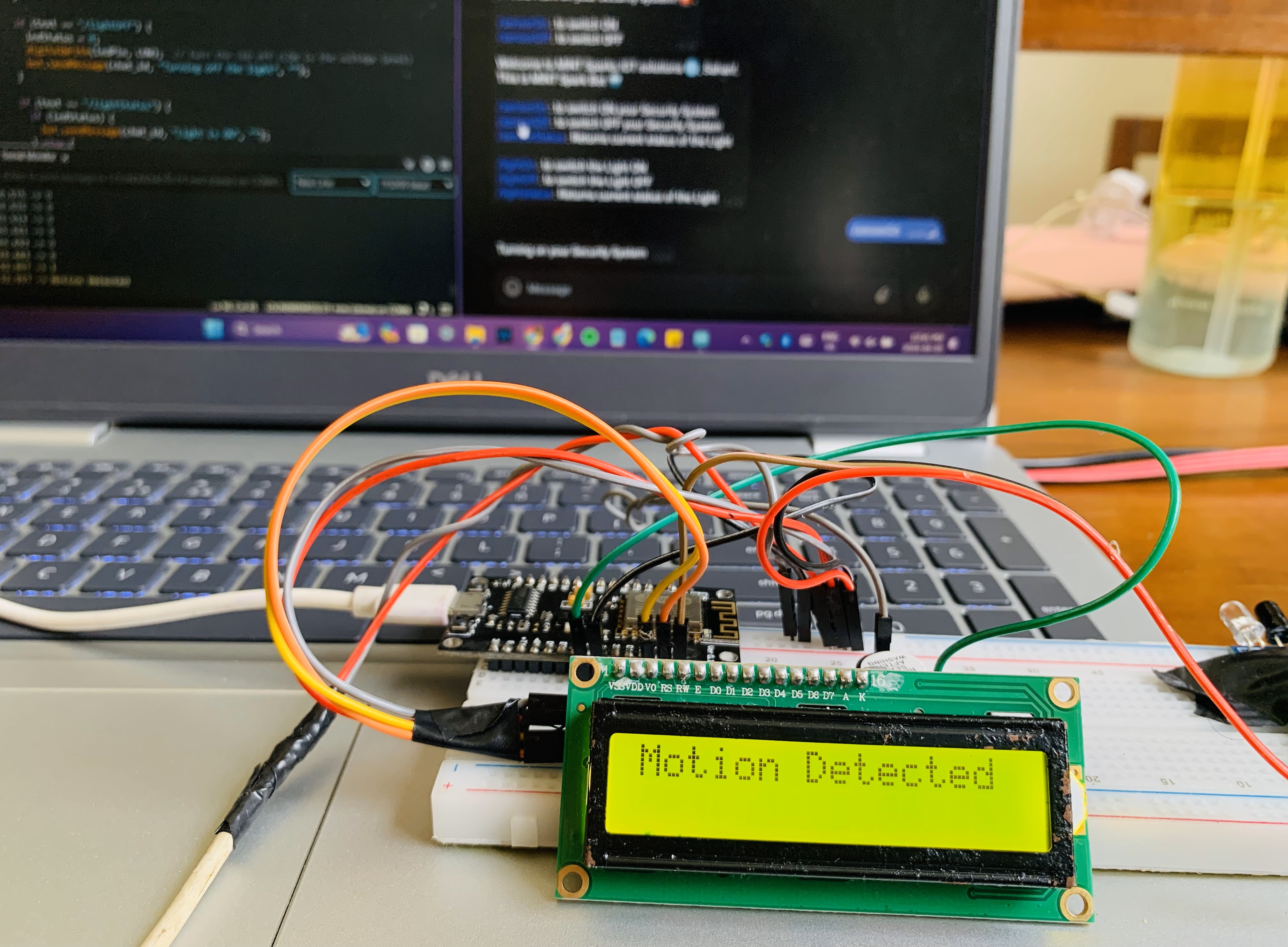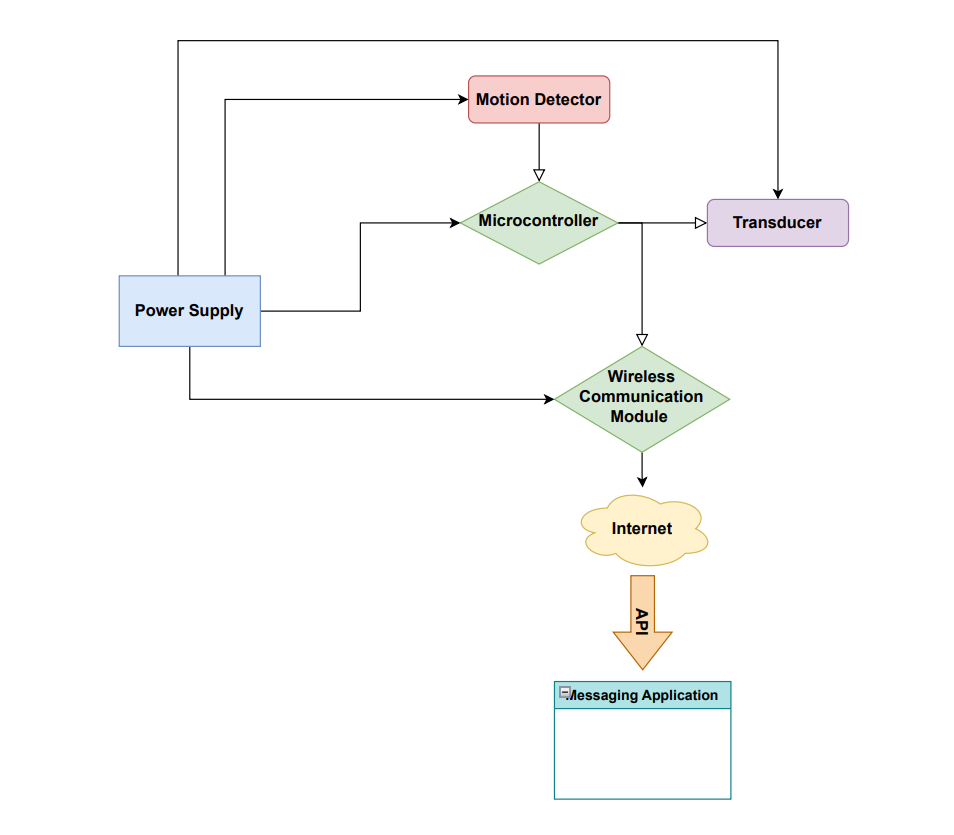The Home Security System is a smart and affordable solution designed to enhance home security through IoT technology. The system utilizes NodeMCU ESP8266, IR sensors, and Telegram app integration to provide real-time monitoring and control of the security system from anywhere with an internet connection.
- Real-time Motion Detection: The IR sensor detects motion within the environment and triggers security alerts.
- Remote Control via Telegram: Users can interact with the system remotely using simple commands sent via the Telegram app on their smartphones.
- Cost-effective and Scalable: The system utilizes affordable IoT components and is designed to accommodate future expansions and integrations with other smart home devices.
- Clone the repository:
git clone https://github.com/sahanrashmikaslk/SmartHomeSecuritySystem-Using_NodeMCU.git- Set up the NodeMCU ESP8266 with the required libraries (LiquidCrystal_I2C, ESP8266WiFi, UniversalTelegramBot, ArduinoJson, etc.).
- Customize the Arduino code (SecuritySystem.ino) according to your WiFi credentials and Telegram bot token.
- Connect the IR sensor and other components as per the circuit diagram provided.
- Upload the Arduino code to the NodeMCU ESP8266 board using the Arduino IDE.
- Power on the NodeMCU ESP8266 board and ensure it is connected to your WiFi network.
- Open the Telegram app on your smartphone and search for the configured Telegram bot.
- Use commands such as
/sensorOn,/sensorOff,/lightOn,/lightOff, etc., to control the security system remotely. - Receive real-time notifications and alerts about security events detected by the system.
- Integration of additional sensors such as cameras and door/window sensors for comprehensive home monitoring.
- Implementation of machine learning algorithms for advanced threat detection and analysis.
- Expansion to a full-scale smart home security ecosystem with integrated automation features.
- Sahan Lelwala
- Dushmin Malisha


